Cocoa processing at Charley's
Posted by Ruth Medd on 27th Jun 2025
The best way to experience Charley’s is to visit us and experience the following process at Mt Edna.
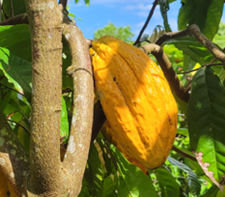 |
The starting point is a cocoa pod (fruit) which has a 2-3 cm of rough, leathery rind, filled with sweet, mucilaginous pulp with a lemonade like taste. It encloses 30 to 50 large seeds that are soft and of a pale lavender to dark brownish purple colour. Enough cocoa for one charley’s chocolate bar
|
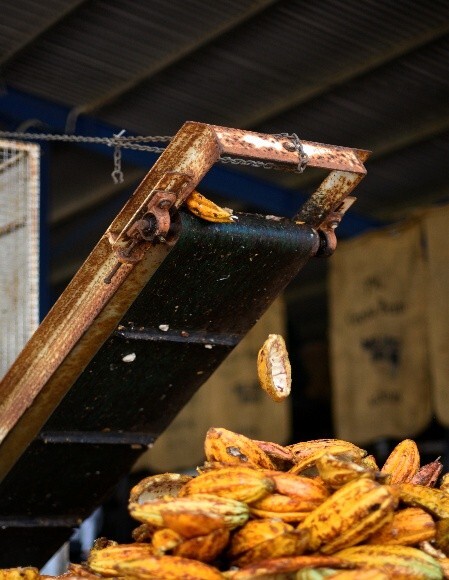 |
2. Pod opening machine Mt Edna Developed by CSIRO as part of the original cocoa project of RIRDC, Charley’s purchased a few years ago. Suitable for large batches of pods |
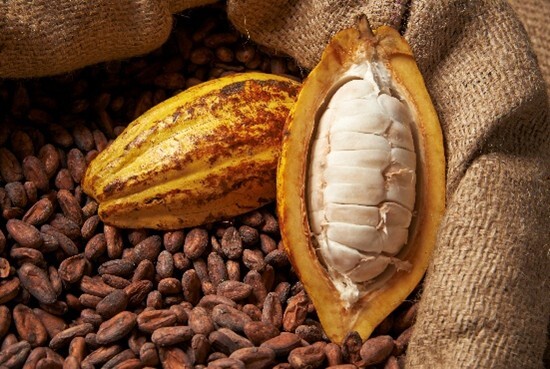 |
3. An opened pod Pods of seeds with white fleshy pulp |
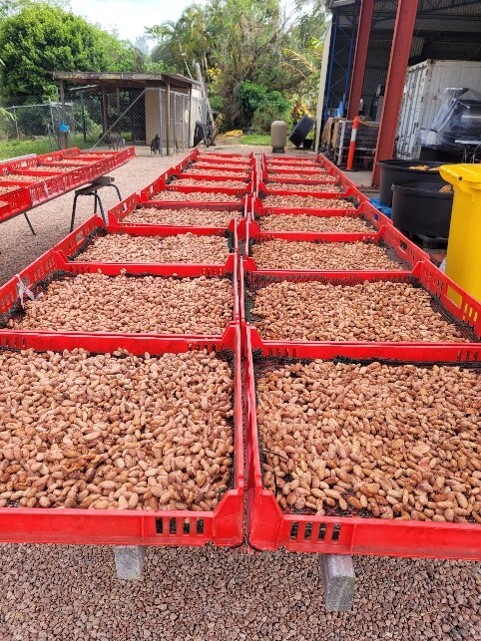 |
4. Fermented cocoa beans drying in the Mt Edna sun. Sun drying gives the best results but there are other methods. Charley’s uses sun dried beans. |
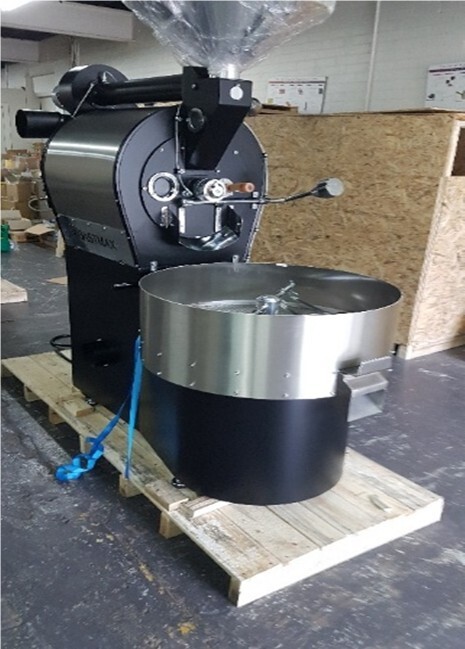 |
5. Charley’s cocoa bean roaster as delivered
|
 |
6. Winnowing was first developed to separate grain from straw and to remove pests. At its simplest, beans are thrown into the air so wind blows away the lighter material, leaving heavier material to fall for recovery. Our specialised cocoa winnowing equipment does the same for cocoa. |
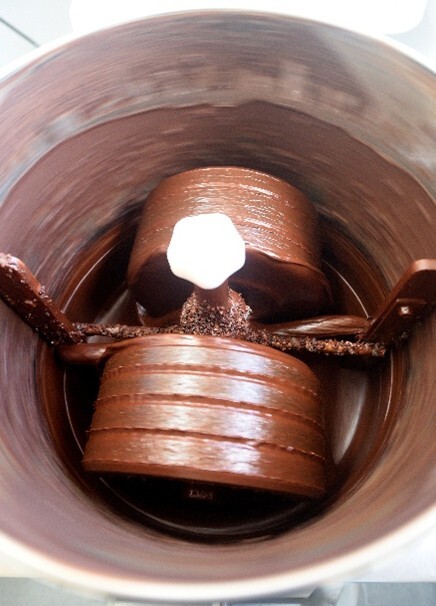 7 7 |
7. Conching Once roasted and winnowed, using a conche (a vessel filled with stone grinders), the cocoa nibs can transform into chocolate. Charley’s uses traditional granite stone conches to turn the nibs into chocolate mass. Charley’s conching takes 24 to 36 hours and we aim for below 20 microns.
|
Legend has it that Rodolphe Lindt (who invented the conche in Berne, Switzerland in 1879) mistakenly left a mixer containing chocolate running overnight. Lindt’s invention produced chocolate with superior aroma and melting characteristics compared to the usual gritty chocolate.
Today, mass chocolate producers use a surface scraping mixer and agitator that evenly distributes cocoa butter within the nibs and may polish the particles. The conche process promotes flavour development through frictional heat, release of volatiles and acids, and oxidation. Food scientists still study what happens during conching and chocolate makers often keep their own process secret as it is key to chocolate texture and flavour.
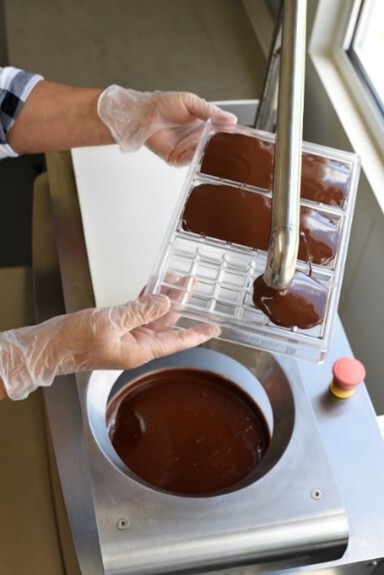 |
8. Tempering Tempering is a heating process that stabilises the cocoa mass and adds the shine. Uncontrolled crystallisation of cocoa can result in crystals of varying size, causing the chocolate surface to appear mottled and matte and the chocolate to crumble rather than snap when broken. The uniform sheen and crisp bite of properly processed chocolate are the result of consistently small cocoa butter crystals from the tempering process and achieved at melting temperature of 34 °C. |
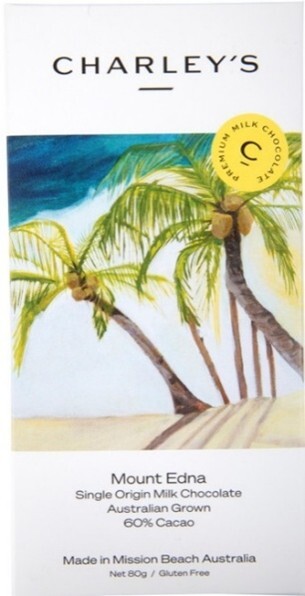 |
9. Packaging After tempering, Charley’s chocolate is refrigerated and packaged by hand in recyclable materials, ready for consumers. Here is our Mt Edna Milk bar with art work by Kim Rayner. To make the best dark chocolate, we use high quality beans and natural processes. Our chocolate is 70% cocoa and is handcrafted in Mission Beach from bean to bar or from cocoa pods from our trees. |
As a graphic - Cocoa seeds to chocolate bar journey
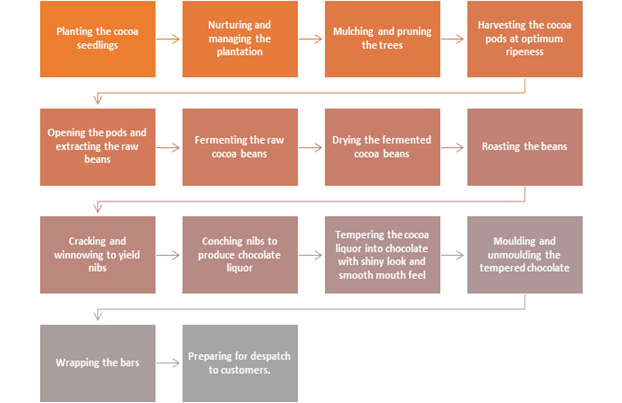
To see this process in action come on one of our chocolate tours. Book a tour at Charley's
